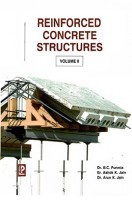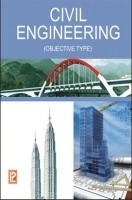This textbook discusses various branches of geology, internal structure, composition of the earth and provides an introduction to engineering geology. It introduces the fundamentals of geology, such as mineralogy, petrology, structural geology and physical geology which includes features, such as weathering of rocks, soil formation and geological work of rivers, oceans and ground water. Topics, such as mineral resources, their statewise statistics of production, resources and reserves, their commercial uses, ornamental/decorative rock deposits of our country, proposals for linking major rivers of India (Ganga-Cauvery) and similar projects in several other countries, ground water development and management, etc., have also been discussed in the book.
However, the main thrust of this book still lies on the application of earth sciences in providing effective solutions to civil engineering/geotechnical field problems since it is impossible to separate engineering application of geology from civil engineering practices. It is very important to study the geological aspects of civil engineering sites in detail before the project is initiated. To meet this requirement, civil engineers and the engineering geologists have to work together on the field right from the initial planning stage to the completion of the project.
Site selection, design, the construction of onshore and offshore structures and all other civil engineering constructions are influenced by the geological factors of the area. Weathering pattern, soil erosion, conservation and treatment, flood control, ravine control and reclamation, coastal erosion and protection measures, ground water hazards, ground water pollution, earthquake protective structures, etc., are a few of the several topics included in the book that not only help in developing a deeper insight of the subject but also provide effective guidelines to the practicing engineers in planning their projects. An exclusive note has been added on rainwater harvesting and artificial recharge techniques of ground water (CGWB suggestive methods) with typical case in points.
The latest trends and developments in the site investigation techniques have been mentioned that can help in preparation and utilization of toposheets and topographic map. Geological maps of several regions have been incorporated to explain the step-by-step method of geological map right from its preparation to its interpretation and its engineering significance. GPS systems, their importance, applicability in field site investigations have also been incorporated..
This book Useful for Engineering Geology Students.
1. Introduction to Geology and its Branches
2. Engineering Geology
3. Weathering of Rocks
4. Earthquakes and Seismic Hazards
5. Earthquakes, Oceans and Tsunamis
6. Tips on Earthquake Resistant Design and Construction
7. Crystallography and Mineralogy
8. Petrology
9. Structural Geology
10. Site Investigation Techniques for Civil Engineering Projects
11. Stratigraphy of India: Economic and Engineering Significance
12. Ground Water
13. Remote Sensing and Geographic Information System (GIS)
14. Investigations for Major Dams and Reservoirs
15. Tunnels and Underground Excavations
16. Landslides and Mass Movement
17. Buildings
18. Bridges


















